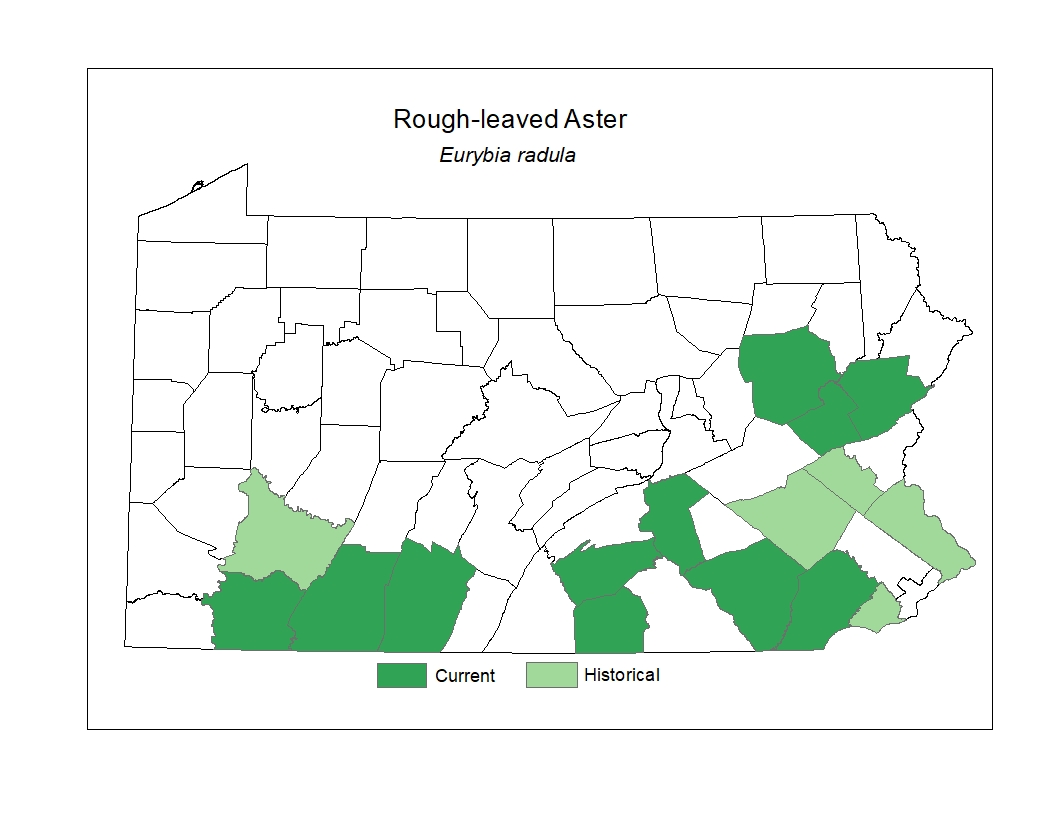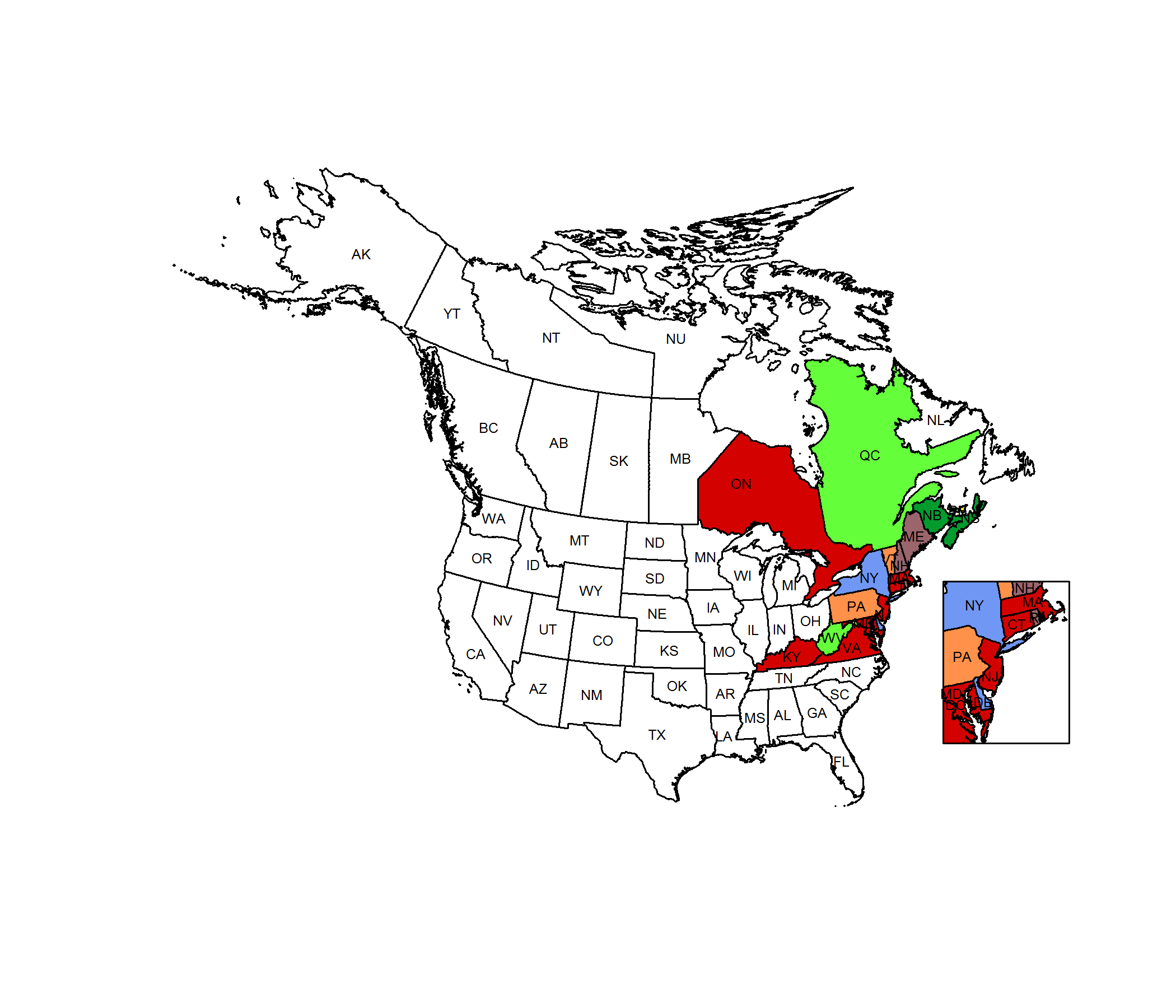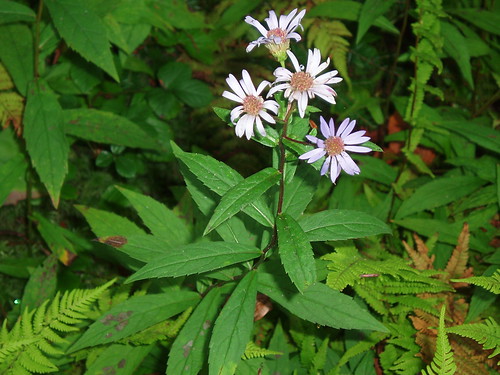 Species Factsheets
Species Factsheets
Eurybia radula
Rough Aster
State Status: N
PBS Status: Pennsylvania Threatened (PT)
Federal Status:
Global Rank: G5
![]() rank interpretation
rank interpretation
State Rank: S2
Did You Know?
The common name for this species comes from its rough textrued stems.
Description
Rough aster (Eurybia radula) is a perennial herb with a stem that can grow up to 1m tall. The leaves are alternate, lance-shaped, strongly veined, toothed on the margin, rough to the touch, stalkless, and up to 11.5cm long. The flowers, appearing from August to October, are arranged in a small cluster of daisy-like flower heads at the top of the stem. Each flower head contains many yellow disk florets that are surrounded by fifteen to forty purple to white ray florets.
Rank Justification
Imperiled in the nation or state because of rarity due to very restricted range, very few populations (often 20 or fewer), steep declines, or other factors making it very vulnerable to extirpation from the nation or state.
PABS
The PA Biological Survey (PABS) considers rough aster to be a species of special concern, based on the few occurrences that have been recently confirmed and its wetland habitat. It does not have a PA legal rarity status, but has been assigned a suggested rarity status of Threatened by PABS. About thirty populations are currently known.
Habitat
It grows in wet woods, swamps, seeps, bogs, and along streams.
Survey Dates
Flowers July - September
Distribution
In Pennsylvania, it has been documented historically mostly in the southern counties.

Threats
Excessive browsing by deer may be a threat in some locations.
Management
The viability of known populations of rough aster and its habitat may be enhanced by creating buffers around wetlands, controlling invasive species, and protecting the natural hydrology surrounding wetlands.
Conservation Status Map

NatureServe. 2017. NatureServe Explorer: An online encyclopedia of life [web application]. Version 7.1. NatureServe, Arlington, Virginia. Available https://explorer.natureserve.org.
http://gobotany.newenglandwild.org/species/eurybia/radula/
- NatureServe. 2018. NatureServe Explorer: An online encyclopedia of life [web application]. Version 7.1. NatureServe, Arlington, Virginia. Available at https://www.natureserve.org/explorer
- Pennsylvania Natural Heritage Program. 2018.
- Rhoads, A.F. and W.M. Klein, Jr. 1993. The Vascular Flora of Pennsylvania. American Philosophical Society, Philadelphia, Pennsylvania. Rhoads, A.F. and T.A. Block.
- 2007. The Plants of Pennsylvania: An Illustrated Manual. 2nd edition. University of Pennsylvania Press, Philadelphia, Pennsylvania.







